The Rover studies Barnacle Bill.
Click on image for full size
Image from: NASA/JPL
Barnacle Bill
Barnacle Bill was the first rock to be explored by the Rover. It was found north by northwest of the Mars Pathfinder lander.
Barnacle Bill was a dark rock. It had many small holes over its surface (vesicles) but otherwise did not appear to be as eroded as other rocks at the site such as the Souffle rock. These features help scientists figure out where Barnacle Bill came from.
You might also be interested in:
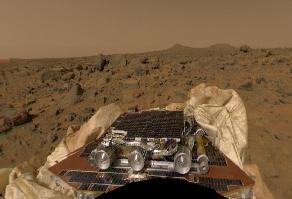
People were really excited when Pathfinder landed on Mars on July 4, 1997. The Mars Pathfinder mission (MPF for short!) was sent to Mars to look at the rocks and soil of Mars. The MPF was actually 2 parts,
...more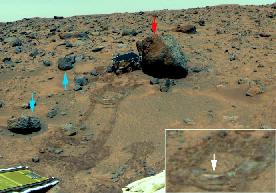
Even though the rocks seem to be much the same, scientists can see three basic differences in these rocks. The three classes are: dark, bright, redder than the dark rock, but not at red as pink pink, perhaps
...more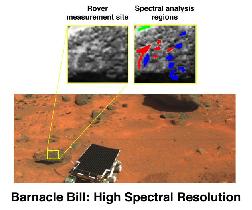
The rocks explored by the Mars Pathfinder's Rover are classified into two groups according to how they eroded. Rocks put in place as a result of an impact which forms a crater are usually much less eroded
...more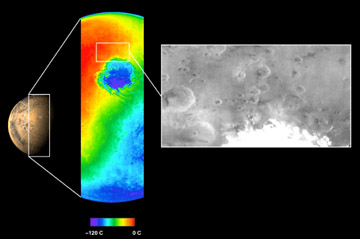
The Mars Odyssey was launched April 7, 2001. After a six-month journey, the Odyssey arrived at Mars on October 24, 2001. The instruments onboard the Mars Odyssey will study the minerals on the surface
...more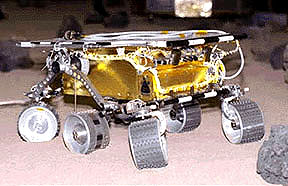
The Mars 2005 mission is still in the planning stages. It is set to launch in the year 2005.
...more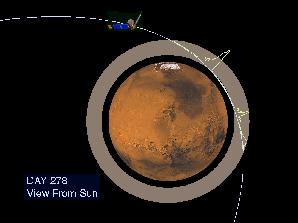
Aerobraking slowed the Mars Global Surveyor down when it reached Mars. Aerobraking also helped MGS to get into the right orbit for mapping the surface of Mars. Aerobraking means that the MGS flew through
...more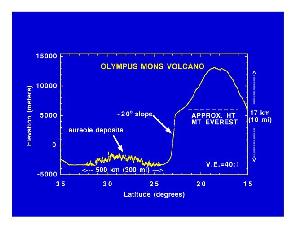
Mars Global Surveyor carries an instrument which measures the heights of things. This instrument is called an altimeter, or "altitude-meter". The graph to the left shows the results returned from Mars
...more















